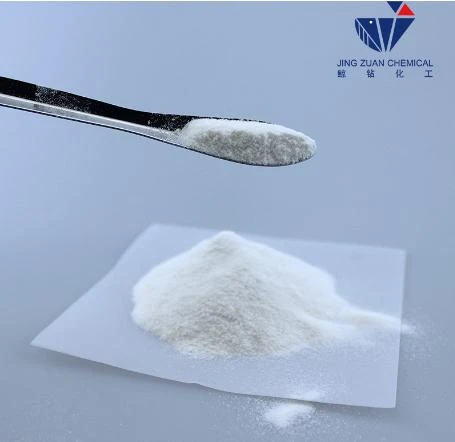
Nov . 11, 2024 02:40 Back to list
Exploring the Applications and Benefits of Hydroxypropyl Methyl Cellulose in Various Industries
Hydroxypropyl Methylcellulose A Versatile Polymer with Diverse Applications
Hydroxypropyl Methylcellulose (HPMC), designated by the CAS number 9004-65-3, is a semi-synthetic polymer derived from cellulose, the structural component of the cell wall in green plants. It has garnered significant attention in various industries due to its unique set of properties, including its ability to form viscous solutions, film-forming capabilities, and excellent stability under a range of conditions. HPMC is commonly used in applications spanning construction, pharmaceuticals, food preparation, and personal care products.
One of HPMC’s most critical characteristics is its water retention property, which makes it an ideal additive in the construction industry, particularly in cement-based materials. When mixed with water, HPMC improves the workability of cement mortars and plasters, allowing for better adhesion and smoother application. It also extends the open time for these mixtures, giving workers more flexibility before the material begins to set. Not only does it enhance the performance of construction materials, but it also reduces the risk of cracking and improves durability.
Hydroxypropyl Methylcellulose A Versatile Polymer with Diverse Applications
HPMC finds extensive use in the food industry as well. It is used as a thickening agent, emulsifier, and stabilizer in various food formulations, including sauces, dressings, and beverages. Its ability to improve texture and mouthfeel is highly valued; for instance, it can impart a creamy texture to low-fat products without the need for high-fat ingredients. Moreover, since HPMC is derived from natural sources and is non-toxic, it is considered safe for consumption, making it a favorable choice in food formulations.
hydroxypropyl methyl cellulose cas no

In the realm of personal care and cosmetics, HPMC is a popular ingredient in products such as shampoos, lotions, and gels. Its thickening and emulsifying properties help stabilize formulations while enhancing the sensory experience of the product. Moreover, it is often used in the manufacturing of hair care products, offering conditioning benefits that improve the hair’s texture and manageability. The versatility of HPMC allows for its integration into numerous formulations, making it an indispensable ingredient in the personal care industry.
Despite its myriad applications, the production and usage of HPMC are governed by various regulations to ensure safety and efficacy. It is essential to ensure that the HPMC used in pharmaceuticals and food products meets specific standards set by regulatory bodies to guarantee the health and safety of consumers. The quality of HPMC can vary based on its degree of substitution and molecular weight, which directly influences its functionality.
As industries continue to evolve and consumers increasingly demand products that are not only effective but also safe and environmentally friendly, HPMC stands out as a sustainable option. Its natural origin, coupled with its versatility and functionality, positions it as a valuable ingredient across diverse applications. Whether in construction, food, pharmaceuticals, or personal care products, Hydroxypropyl Methylcellulose is a testament to the potential of modified natural polymers in meeting contemporary needs.
In conclusion, Hydroxypropyl Methylcellulose (HPMC) serves as a multifaceted polymer with significant importance across various sectors. Its unique properties enable it to enhance the performance of a wide range of products, promoting innovation while adhering to safety standards. As research continues to advance, the potential applications of HPMC are likely to expand further, solidifying its role as a key ingredient in modern formulations.
-
Versatile Hpmc Uses in Different Industries
NewsJun.19,2025
-
Redispersible Powder's Role in Enhancing Durability of Construction Products
NewsJun.19,2025
-
Hydroxyethyl Cellulose Applications Driving Green Industrial Processes
NewsJun.19,2025
-
Exploring Different Redispersible Polymer Powder
NewsJun.19,2025
-
Choosing the Right Mortar Bonding Agent
NewsJun.19,2025
-
Applications and Significance of China Hpmc in Modern Industries
NewsJun.19,2025







